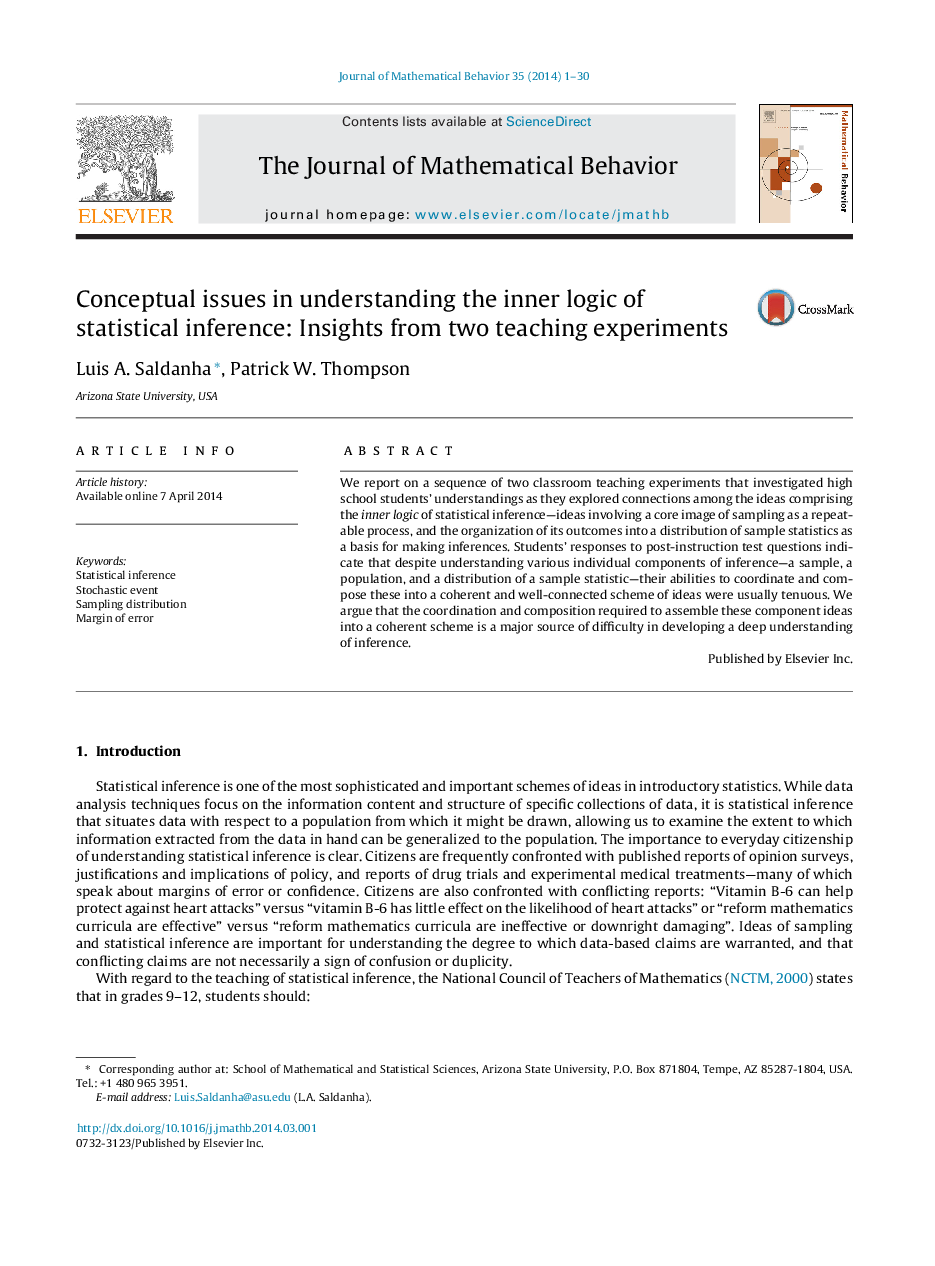| کد مقاله | کد نشریه | سال انتشار | مقاله انگلیسی | نسخه تمام متن |
|---|---|---|---|---|
| 360709 | 1436016 | 2014 | 30 صفحه PDF | دانلود رایگان |
• Students explored connections among ideas of sampling distributions and statistical inference.
• Students often understood individual ideas of sample, population, and sampling distributions.
• Yet, students had difficulty composing the individual ideas into a coherent scheme for inference.
• Composing the ideas into a coherent scheme is a key challenge in understanding inference deeply.
We report on a sequence of two classroom teaching experiments that investigated high school students’ understandings as they explored connections among the ideas comprising the inner logic of statistical inference—ideas involving a core image of sampling as a repeatable process, and the organization of its outcomes into a distribution of sample statistics as a basis for making inferences. Students’ responses to post-instruction test questions indicate that despite understanding various individual components of inference—a sample, a population, and a distribution of a sample statistic—their abilities to coordinate and compose these into a coherent and well-connected scheme of ideas were usually tenuous. We argue that the coordination and composition required to assemble these component ideas into a coherent scheme is a major source of difficulty in developing a deep understanding of inference.
Journal: The Journal of Mathematical Behavior - Volume 35, September 2014, Pages 1–30
